 Yesterday I had the chance to attend Julie Reiner and Francesco Lafranconi’s “Paradise Lost, Then Found: The Evolution of the Classic Hawaiian Cocktail” seminar at the Hawai‘i Food & Wine Festival. Julie and Francesco are among the crème de la crème in the cocktail world. Julie is owner of New York City’s Clover Club and Lani Kai, and co-founder of the Flatiron Lounge and Pegu Club. She’s also, by the way, a local girl! Francesco is a cocktail consultant who has worked at some of the most prestigious hotel bars in the world and is now national director of mixology and spirits educator for Southern Wine & Spirits of America.
Yesterday I had the chance to attend Julie Reiner and Francesco Lafranconi’s “Paradise Lost, Then Found: The Evolution of the Classic Hawaiian Cocktail” seminar at the Hawai‘i Food & Wine Festival. Julie and Francesco are among the crème de la crème in the cocktail world. Julie is owner of New York City’s Clover Club and Lani Kai, and co-founder of the Flatiron Lounge and Pegu Club. She’s also, by the way, a local girl! Francesco is a cocktail consultant who has worked at some of the most prestigious hotel bars in the world and is now national director of mixology and spirits educator for Southern Wine & Spirits of America.
FYI, I’m going to use my “writing space” to tell you about what I learned, so hover over the photos to see what they’re all about.
Or go to the gallery where there are more photos and the captions show up under the photos.
 The “welcome cocktail” was a creation by Francesco, the Halakahiki Royal. (I misheard him and tweeted that it was called the “Halekulani Royale,” which made sense to me because that’s where the seminar was held.) I got distracted talking to people I hadn’t seen in a while, so my drink sat at my seat, slowly melting.
The “welcome cocktail” was a creation by Francesco, the Halakahiki Royal. (I misheard him and tweeted that it was called the “Halekulani Royale,” which made sense to me because that’s where the seminar was held.) I got distracted talking to people I hadn’t seen in a while, so my drink sat at my seat, slowly melting.
This turned out to be a good thing because, Francesco explained later, there’s basically a lot of liquor in the glass (Pisco, Maraschino and moscato), and as the “Halakahiki Ice Cube”—made of pineapple purée, ginger beer, orgeat and orange flower water—melts, the drink becomes more balanced.
Between explaining the cocktails we were being served, Julie and Francesco talked about the history of tiki drinks and how they went from good to bad and now improving as more bartenders become interested in mixing good drinks.
As Francesco said, “It’s all about the ingredients.” Part of the reason tiki drinks got so bad at a certain point was because it was just so much easier to substitute crummy ingredients for the good stuff—commercially made amaretto or almond syrup instead of orgeat, bottled sweet-and-sour mix instead of fresh juices. In some cases, like the mai tai, juices were added where there hadn’t been any to begin with.
What this also did was throw the drinks out of balance, so you’d add a big float of rum to make it seem less sweet and less watered down. And there you have the much-maligned, hotel bar bad tiki drink.

Another interesting bit of trivia Julie shared was that while on the Mainland tiki and “Polynesian pop culture” were quite popular, when air travel became “easy” and visitors started flocking to Hawai‘i to get a taste of that “Island life” (tiki statues and girls in grass skirts), Hawai‘i had to actually “tiki-fy” because we didn’t have any of that!
Next we tried a Blue Hawaiian, a classic drink created by Harry Yee of the Hilton in 1957 to showcase the “new” Bols blue curacao. Harry, Julie said, is also credited as the first to put a backscratcher in a drink.
This was a very, very good Blue Hawaian—as Julie noted, there are some really bad ones out there—but I’m just not a big fan of the drink. Or pretty much any drink with coconut cream. It always tastes like licking a tourist.
Julie’s second cocktail was my favorite of the day. Hands down. When Julie opened her newest bar, Lani Kai, she wanted it to be “original, modern tropical drinks.” However, she said, “New York insists that tropical equals tiki.” So she gave in. Lani Kai hosts “Tiki Monday” every week, which has become a “Pirate Tiki” thing, thanks to Brian Miller, who runs Tiki Monday. “He does this hip, cool, ‘I’m a pirate; try my drink!’ thing,” Julie said. “So now I’ve become the pirate manager. They need management.” I totally want to go to Lani Kai for Tiki Monday!*
Anyway, back to Julie’s modern tropical drink. These are what have evolved out of the “bad tiki” drink years. They use the same flavor profiles, often what Francesco calls the Holy Trinity: orgeat, passion fruit and anise, but are a completely different thing. Julie’s drink is called The Tree House (I forgot to ask her why) and is made with Bulleit bourbon, Myers’s dark rum, macadamia nut orgeat and mole bitters (that’s “mo-lay,” like the Mexican sauce, not mole, like the rodent).
The orgeat she uses is made by a guy named “Tiki” Adam Kolesar. It’s all he does. Make orgeat. (Incidentally, as I’m writing this, I’m making my own orgeat. I’d already planned to do this for an ice cream I’m making, but it’s a neat coincidence. Check back in a week or so to see how my experiment went. It’s mostly sitting around watching almonds soak in water.) Tiki Adam’s orgeat is great stuff. We all got a little snifter with a bit of the regular orgeat, and I cadged a sip of the macadamia nut orgeat from Julie. Both were excellent—much more emphasis on the nutty flavor (normally orgeat is made with almonds), and a lot less sweet than the commercially made stuff.
The final drink of the seminar was Francesco’s crazy liquid nitrogen concoction, the Waikiki Coconut Laguna. Here’s a little tip for you: if someone ever offers you a big chunk of something that JUST came out of a vat of liquid nitrogen? Go easy on it. The center is cold as hell (or as cold as hell would have to get to freeze over). I got “burned” on my tongue and roof of my mouth! (It felt like when you drink scalding hot coffee.) Interestingly, I did not get brain freeze.
The cocktail involves first preparing a “broth,” as Francesco called it (it’s not hot), of passion fruit tea steeped in coconut water and coconut cream. Then, combine Kai Coconut Pandan, kalamansi purée and limoncello in a big ol’ vat with liquid nitrogen and stir until it turns into sorbet.
I think Francesco was having a little too much fun with this.
“So what kind of container should we use if we do this at home?” inquired a woman sitting in the seminar.
“We are not doing this at home!” exclaimed Julie. “That’s my mother-in-law, everyone. And we are not doing this at home!”
This was a fun cocktail to watch being made, and pretty tasty, too.
 Oh, also, check out these drawings. Out of the corner of my eye, I noticed the girl sitting next to me kept erasing things. I thought it was strange that someone was using pencil (is that weird? I just don’t exist in a pencil world) to take notes, and why wouldn’t you just cross it out and move on? That’d be so much faster than erasing. Well, turns out she wasn’t taking notes—she was drawing! She did these cool, detailed drawings of each drink. She said her boss couldn’t come so he asked if she would go instead and take some notes for him. Wow. That’s dedication. Shake couldn’t come either, but I just showed him photos and gave him the recipe cards.
Oh, also, check out these drawings. Out of the corner of my eye, I noticed the girl sitting next to me kept erasing things. I thought it was strange that someone was using pencil (is that weird? I just don’t exist in a pencil world) to take notes, and why wouldn’t you just cross it out and move on? That’d be so much faster than erasing. Well, turns out she wasn’t taking notes—she was drawing! She did these cool, detailed drawings of each drink. She said her boss couldn’t come so he asked if she would go instead and take some notes for him. Wow. That’s dedication. Shake couldn’t come either, but I just showed him photos and gave him the recipe cards.
Thanks to Julie and Francesco for such a great seminar! A fabulous way to spend the morning. Almost every seat in the room was filled, mostly with people in the industry, which really speaks to how well-respected Julie and Francesco are in their line of business. The Halekulani once held a week-long event with several cocktail seminars like this one, and it would be nice if something like it came back.
That’s it folks…I’m off to stir the almonds again.
Disclosure: I was asked to attend the seminar in place of a friend who had received a media comp to blog about the class, but no compensation was received for this post, and the opinions expressed are strictly my own. (Thanks, Melissa! Sorry you had to work, but thanks for letting me come drink in your place!)
*Sad note: Julie’s Lani Kai bar shut down in late 2012. We never had a chance to visit. Sadness.

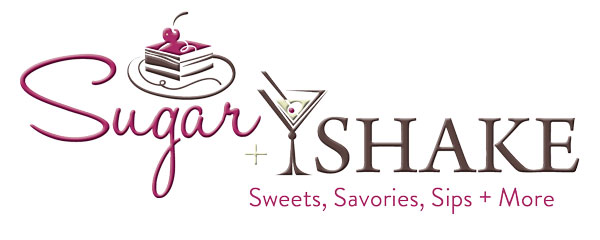














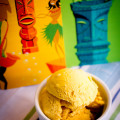
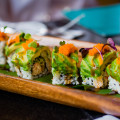
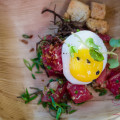


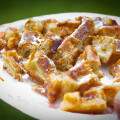
Melissa Chang
September 9, 2012 4:58 pmI just want you to know, I’ve never licked a tourist!
sugar
September 9, 2012 5:47 pmI dare you!